About new atoms and living MIDs
A colleague with higher humanitarian education suggests that it is right to say “ live mussels, ” but today I’m more insistent than ever)
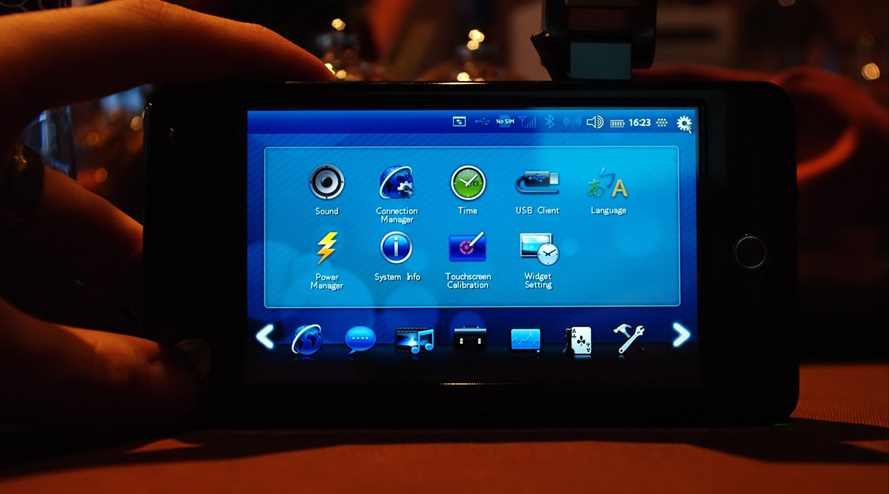
Yesterday, Intel held a regular meeting with representatives of leading IT publications, where plans for the near future of mobile systems were opened. Let me remind you that not so long ago a similar meeting was organized, but dedicated to desktop systems.

This time the meeting place was not so shocking, but no less cozy - a small building somewhere in the back streets of Barvikha, where the pleasant New Year's atmosphere was in harmony with three dozen uncles of different degrees of beard - these were specialists from THG, IXBT, Ferra, 3DNews , GameLand and other companies.
Immediately at the entrance to the hall, under the projector screen, lay engineering samples of various pieces of iron, about which a little later. As soon as everyone was seated at the tables, a man appeared on the stage, without whichevery New Year every Intel meeting is possible - Santa Claus Alexei Rogachkov , regional specialist in product introduction. Actually, it was he who began to open the curtains of secrets, but since a lot of information was shrouded in the NDA, I will retell only in general terms.
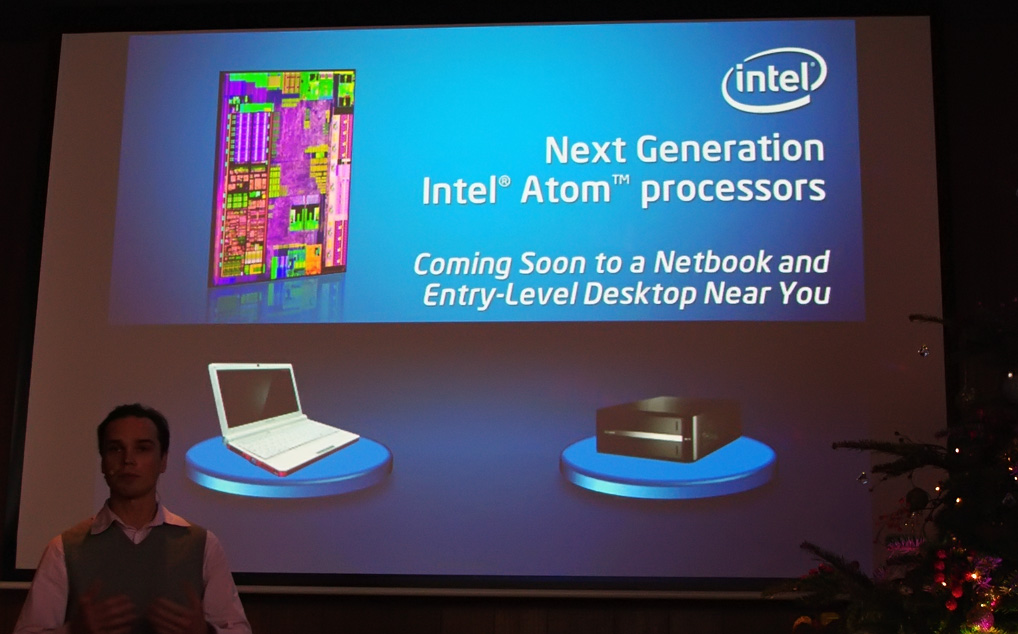
So, information about new Intel Atom processors , code-named Pine Trail , is already circulating on the Internet.. Indeed, next year Intel plans new stones with an integrated graphics controller and memory controller (for the first time in the X86 chip family) - these atoms will be designed for entry-level netbooks and desktop PCs (nettops).
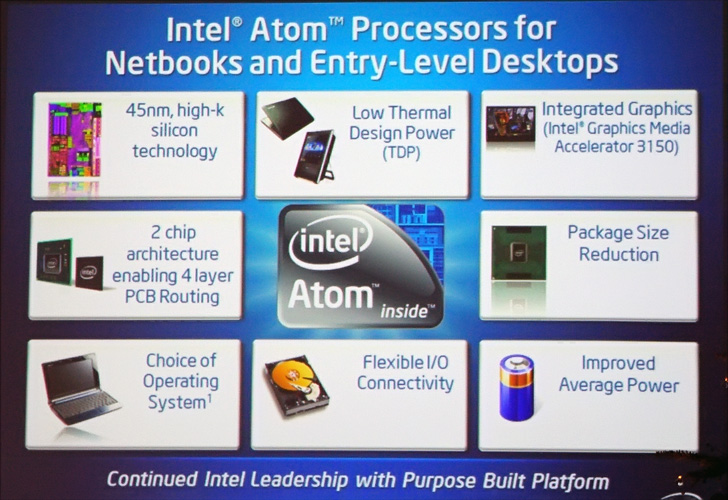
The platform for netbooks will be presented by a single-core Intel Atom N450 processor (1.66 GHz, 512Kb L2 cache) and Intel NM10 Exoress chipset , and nettops will be built on the same chipset, but the processor will either be a single-core Intel Atom D410 (1.66 GHz, 512KB L2) or dual-core Intel Atom D510 (1.66GHz, 1024Kb L2). These processors are made using 45-nanometer technology and are still the smallest from the manufacturer.
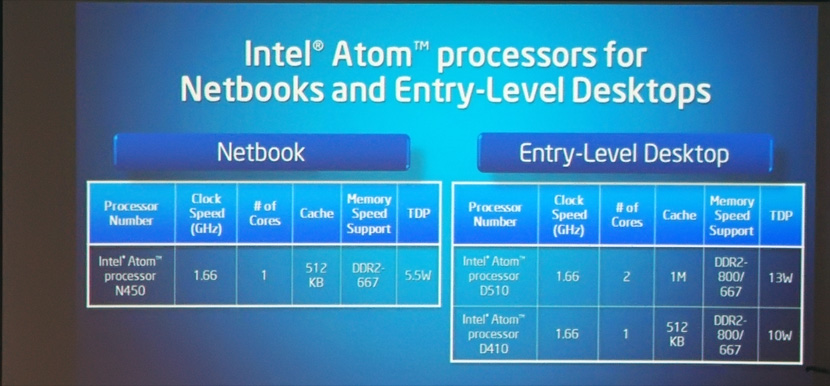
What does all this give? It is logical to assume that reducing the number of microcircuits from three (CPU + north and south bridge) to one (as well as the number of layers for wiring the board) will lead to a decrease in size - both the boards and the devices themselves as a whole. With a 20% reduction in power consumption, heat was also reduced. In the end, the gain will be in the operating time and “coolness” of the device, up to passive cooling.
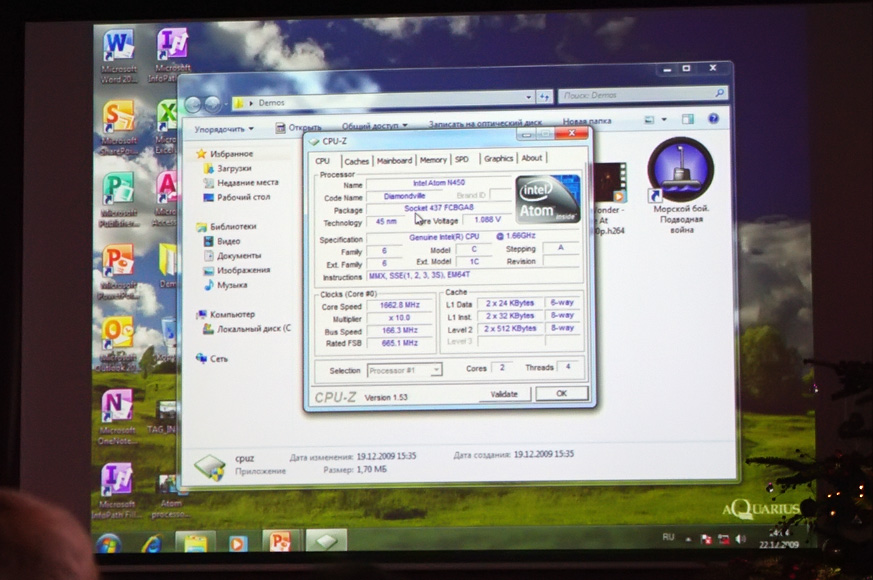
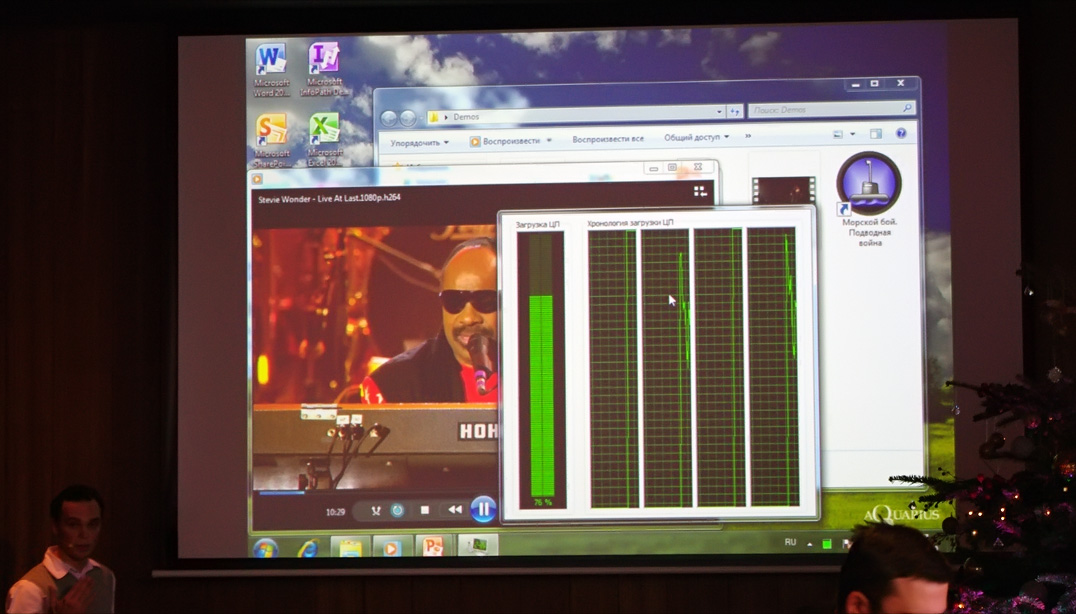
By the way, about heat dissipation - new systems can really cost only one with passive cooling, which is another nice plus (along with SSD-drives you can get absolutely silent solutions) for the upcoming platforms.
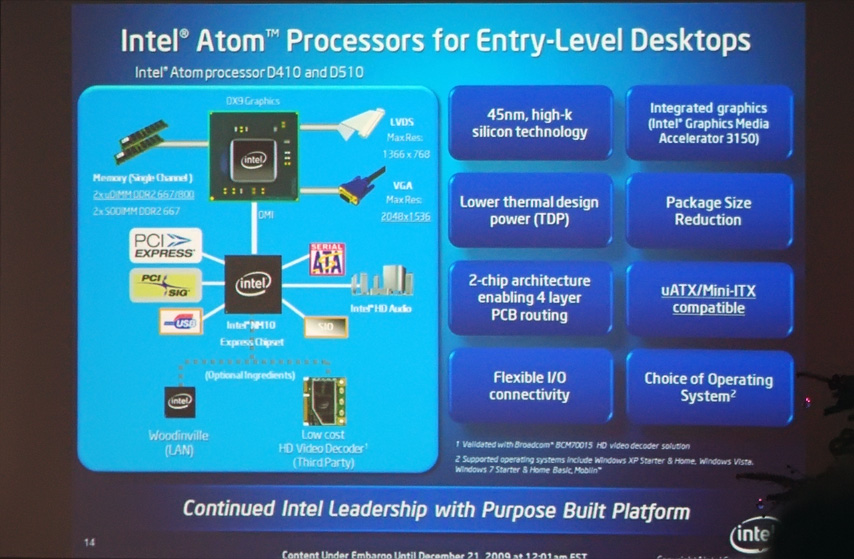

In addition to Alexei Rogachkov, Nikolai Isakov spoke, who told about operating systems that will be installed on new devices. Along with Windows 7 (Starter or Home Basic), users will be offered an alternative operating system (most likely Mandriva Linux 2010) with the Moblin platform , which will make it possible to fine-tune the device interface for themselves, as well as to install a huge number of packages from the repository. What surprised me - Microsoft plans to port Silverlight for these devices)
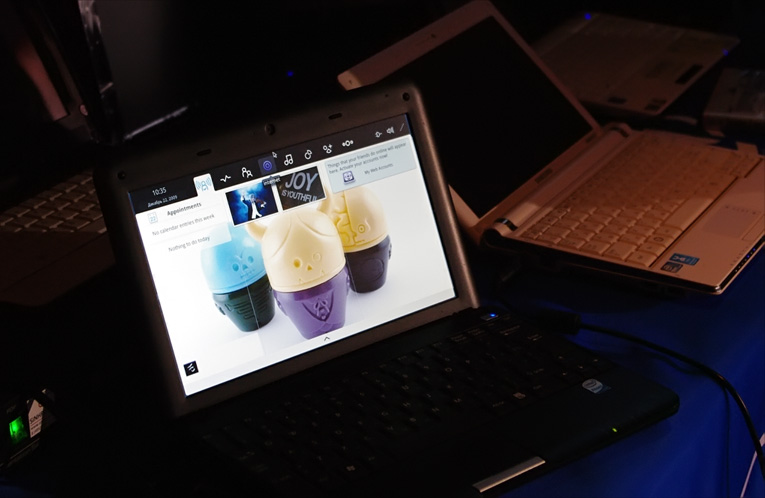
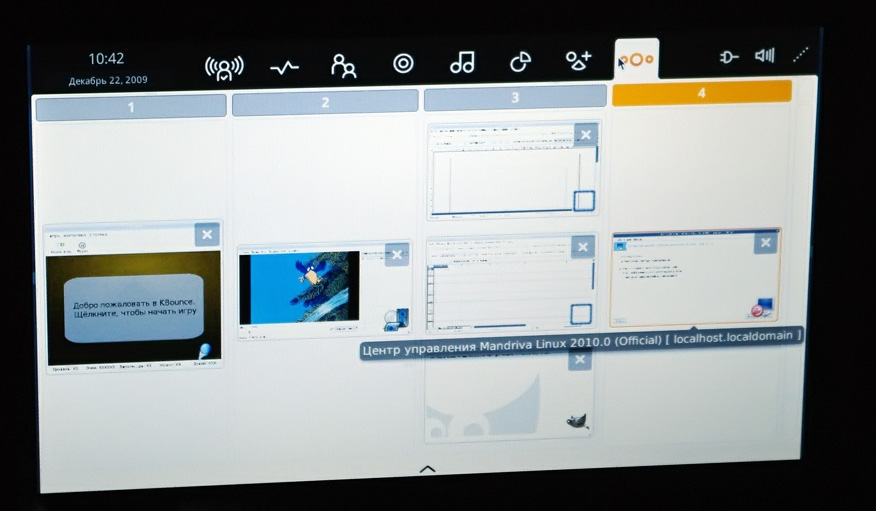
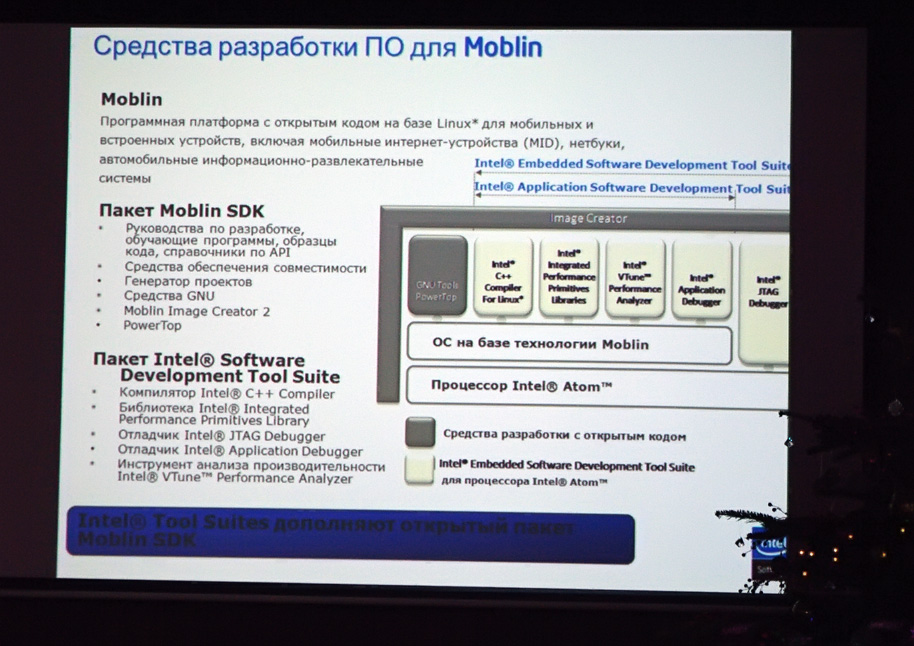
He also spoke about the development of the new Intel Atom Developer program and the launch of an Intel-authorized online store with a new economic model, which will be primarily interesting to independent developers of components and software.
Ischo - withinIntel Software Network is running a full Black Belt program , which will probably allow someone to replenish the orderly ranks of the company's employees. In short - a kind of “RPG” for developers and programmers), in which skills swing due to the contribution to the development of the community.
In addition to the upcoming netbooks (ASUS EeePC 1005PE and unknown models from MSI and Samsung), two interesting devices were presented at the meeting - one from the MID class (Mobile Internet Device), and the second from the MIND class (Mosk Mobile Internet Navigation Device). Although both classes are not new - the devices from them were already presented by different companies, it was nice to see how it will look in the near future) Engineering samples, both on Linux. There is almost everything that is in the current devices (in terms of software), but the hardware was pleasantly surprised) If it works, I’ll do a review of these pieces of iron, but for now just a couple of frames:
MIND :
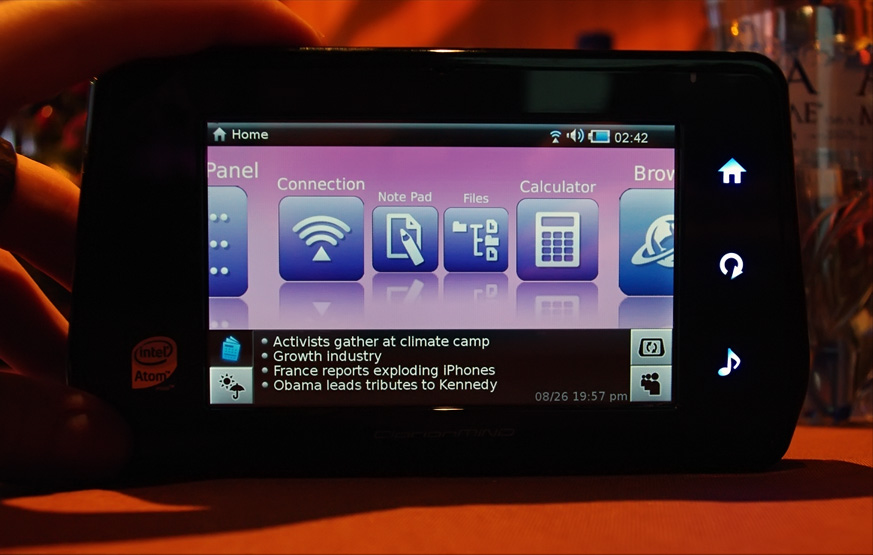
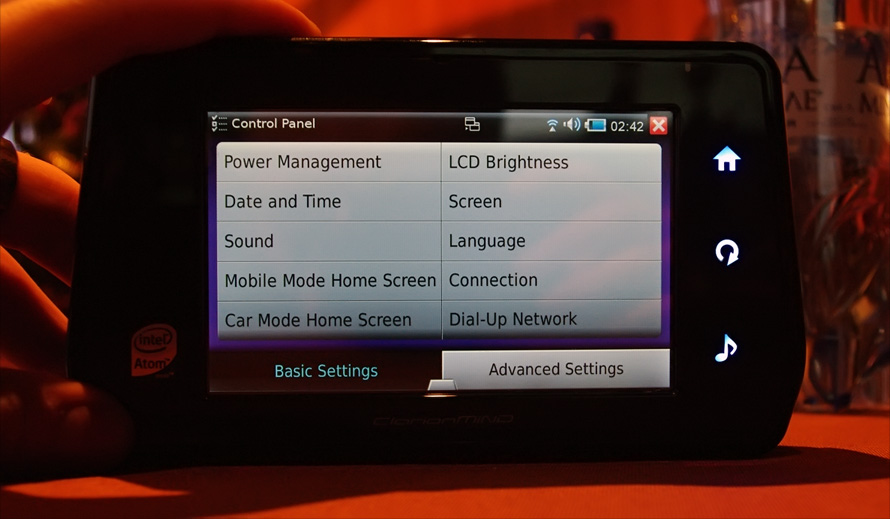

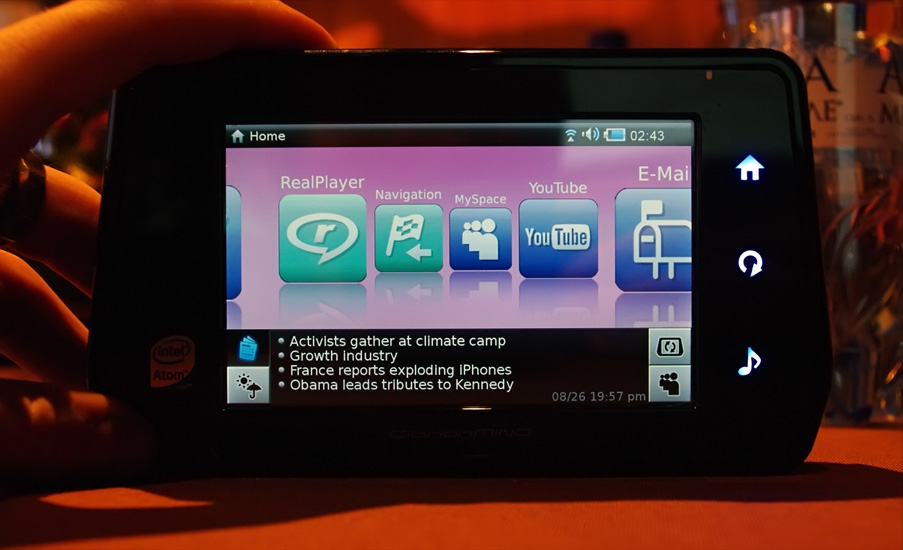
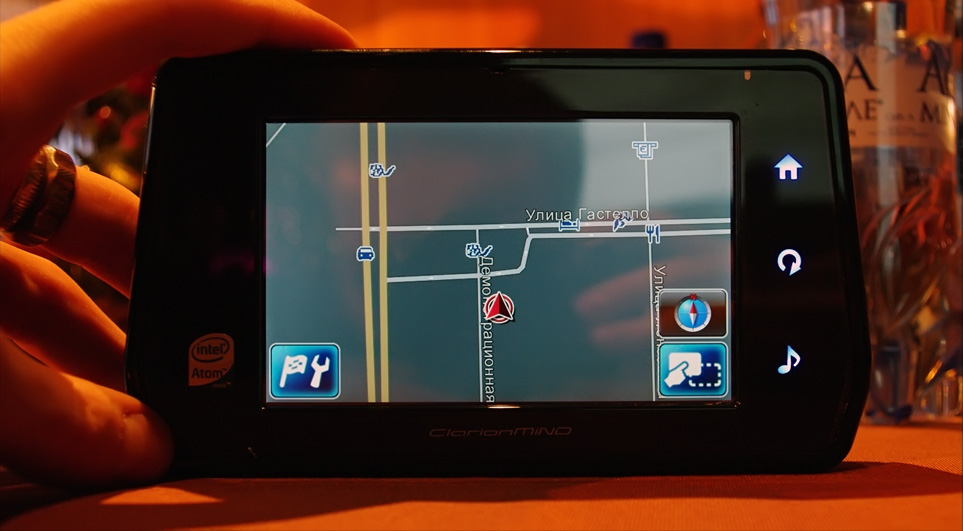
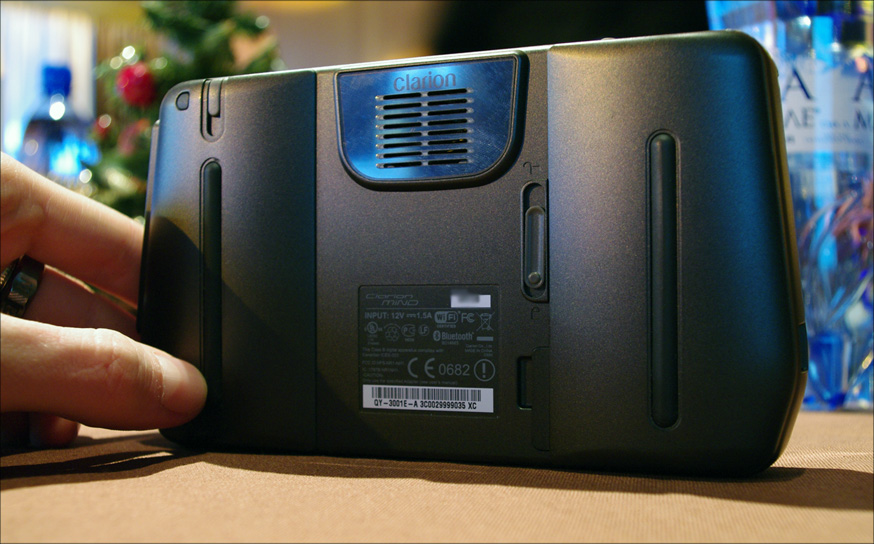
MID :
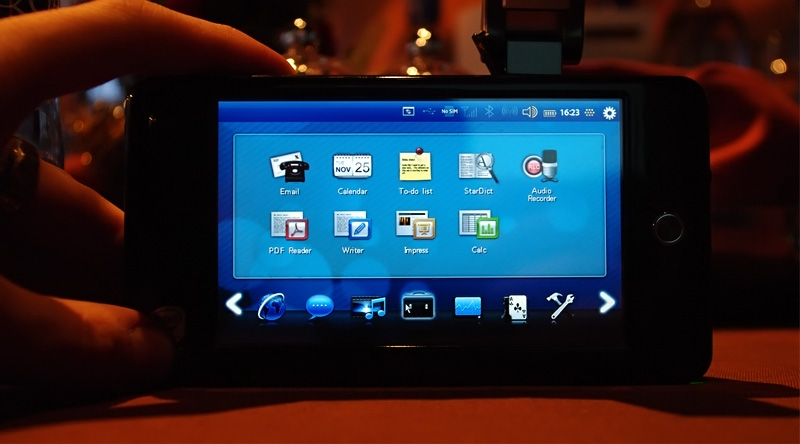
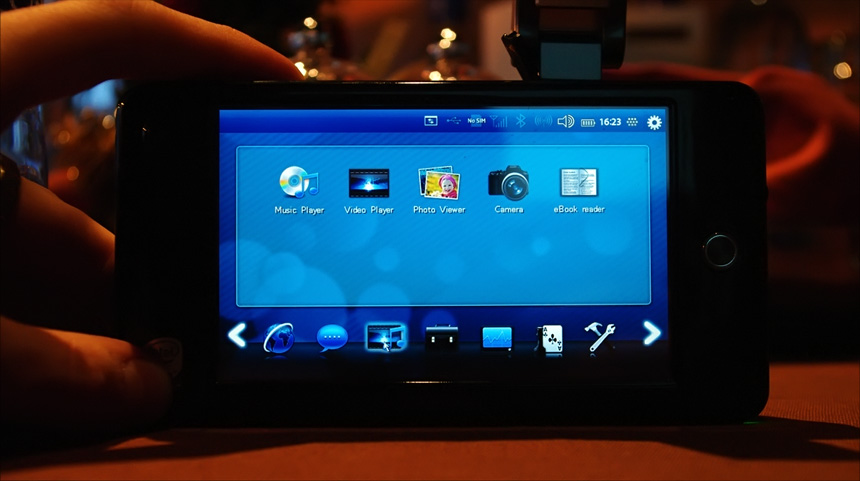
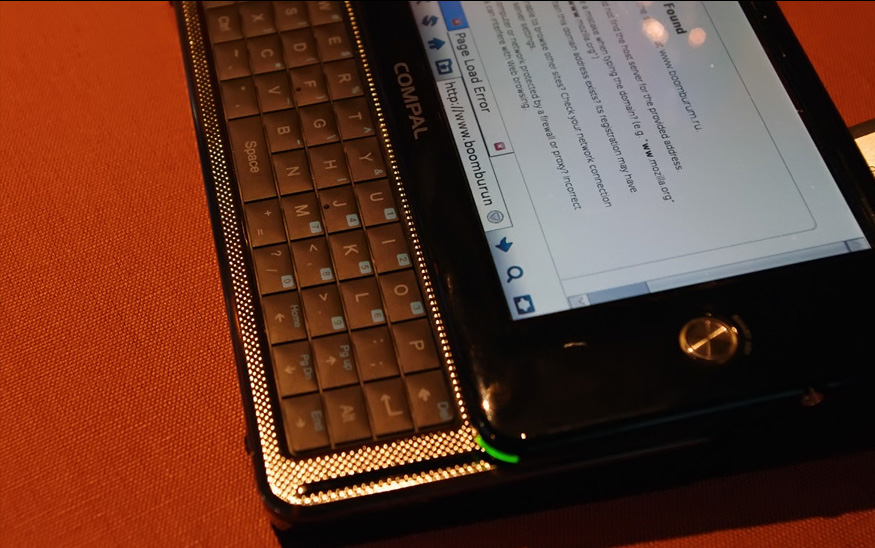
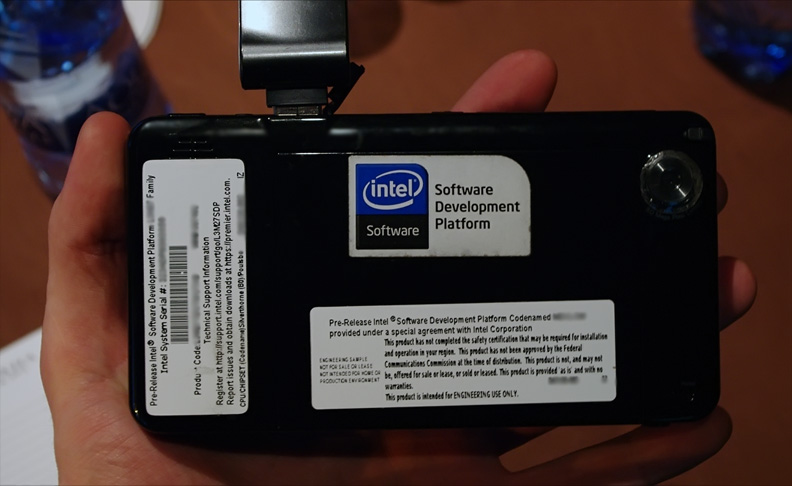
With its processors, Intel, in fact, spawned a new segment of devices on the market, sales of which surpassed sales of iPhones, Nintent and Wii. Therefore, the development of this direction is logical) Agree - during the economic crisis, the development of such devices cannot but rejoice - someone does not need the functionality of a full-fledged computer or laptop, but someone simply does not like the cost. Well, in general, the downsizing trend is also very pleasant;) By the way, at the moment, with the new Atoms, about 80 variants of device designs have been developed, including products from companies such as ASUS, Acer, Dell, Fujitsu, Lenovo, MSI, Toshiba, Samsung and others.
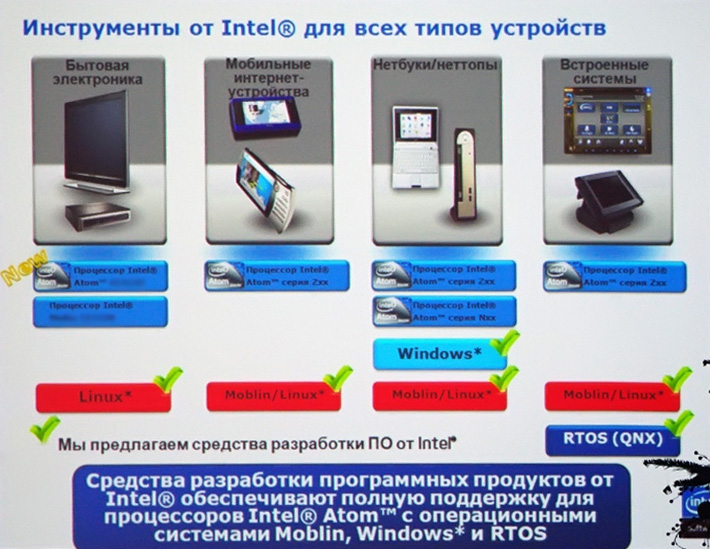
After drinking and eating, watching beautiful slides, having plenty of chatting with each other, everyone went about their business :)

By the way! I recalled an interesting question for Alexei Rogachkov, which was sounded from the audience: “ Tell me, here is the thermal package of current netbooks - about 12W, although laptops released at the beginning of the millennium on the Intel Centrino platform had about the same situation. Both systems cope with high-quality video only with gritting teeth, i.e. in fact, the tasks being solved are very similar. So where, in fact, is progress? ". It would be interesting to know the answer to this question from readers;)
 All news regarding ASUS and Intel primarily appears on the TrendClub project - welcome!
All news regarding ASUS and Intel primarily appears on the TrendClub project - welcome!
I will try to keep abreast of events;)
Success!

Yesterday, Intel held a regular meeting with representatives of leading IT publications, where plans for the near future of mobile systems were opened. Let me remind you that not so long ago a similar meeting was organized, but dedicated to desktop systems.

This time the meeting place was not so shocking, but no less cozy - a small building somewhere in the back streets of Barvikha, where the pleasant New Year's atmosphere was in harmony with three dozen uncles of different degrees of beard - these were specialists from THG, IXBT, Ferra, 3DNews , GameLand and other companies.
Immediately at the entrance to the hall, under the projector screen, lay engineering samples of various pieces of iron, about which a little later. As soon as everyone was seated at the tables, a man appeared on the stage, without which

So, information about new Intel Atom processors , code-named Pine Trail , is already circulating on the Internet.. Indeed, next year Intel plans new stones with an integrated graphics controller and memory controller (for the first time in the X86 chip family) - these atoms will be designed for entry-level netbooks and desktop PCs (nettops).

The platform for netbooks will be presented by a single-core Intel Atom N450 processor (1.66 GHz, 512Kb L2 cache) and Intel NM10 Exoress chipset , and nettops will be built on the same chipset, but the processor will either be a single-core Intel Atom D410 (1.66 GHz, 512KB L2) or dual-core Intel Atom D510 (1.66GHz, 1024Kb L2). These processors are made using 45-nanometer technology and are still the smallest from the manufacturer.

What does all this give? It is logical to assume that reducing the number of microcircuits from three (CPU + north and south bridge) to one (as well as the number of layers for wiring the board) will lead to a decrease in size - both the boards and the devices themselves as a whole. With a 20% reduction in power consumption, heat was also reduced. In the end, the gain will be in the operating time and “coolness” of the device, up to passive cooling.


By the way, about heat dissipation - new systems can really cost only one with passive cooling, which is another nice plus (along with SSD-drives you can get absolutely silent solutions) for the upcoming platforms.


In addition to Alexei Rogachkov, Nikolai Isakov spoke, who told about operating systems that will be installed on new devices. Along with Windows 7 (Starter or Home Basic), users will be offered an alternative operating system (most likely Mandriva Linux 2010) with the Moblin platform , which will make it possible to fine-tune the device interface for themselves, as well as to install a huge number of packages from the repository. What surprised me - Microsoft plans to port Silverlight for these devices)



He also spoke about the development of the new Intel Atom Developer program and the launch of an Intel-authorized online store with a new economic model, which will be primarily interesting to independent developers of components and software.
Ischo - withinIntel Software Network is running a full Black Belt program , which will probably allow someone to replenish the orderly ranks of the company's employees. In short - a kind of “RPG” for developers and programmers), in which skills swing due to the contribution to the development of the community.
About mussels)
In addition to the upcoming netbooks (ASUS EeePC 1005PE and unknown models from MSI and Samsung), two interesting devices were presented at the meeting - one from the MID class (Mobile Internet Device), and the second from the MIND class (
MIND :






MID :




With its processors, Intel, in fact, spawned a new segment of devices on the market, sales of which surpassed sales of iPhones, Nintent and Wii. Therefore, the development of this direction is logical) Agree - during the economic crisis, the development of such devices cannot but rejoice - someone does not need the functionality of a full-fledged computer or laptop, but someone simply does not like the cost. Well, in general, the downsizing trend is also very pleasant;) By the way, at the moment, with the new Atoms, about 80 variants of device designs have been developed, including products from companies such as ASUS, Acer, Dell, Fujitsu, Lenovo, MSI, Toshiba, Samsung and others.

After drinking and eating, watching beautiful slides, having plenty of chatting with each other, everyone went about their business :)

By the way! I recalled an interesting question for Alexei Rogachkov, which was sounded from the audience: “ Tell me, here is the thermal package of current netbooks - about 12W, although laptops released at the beginning of the millennium on the Intel Centrino platform had about the same situation. Both systems cope with high-quality video only with gritting teeth, i.e. in fact, the tasks being solved are very similar. So where, in fact, is progress? ". It would be interesting to know the answer to this question from readers;)
I will try to keep abreast of events;)
Success!
